初三英语语法知识总复习.ppt
- 格式:ppt
- 大小:4.99 MB
- 文档页数:18
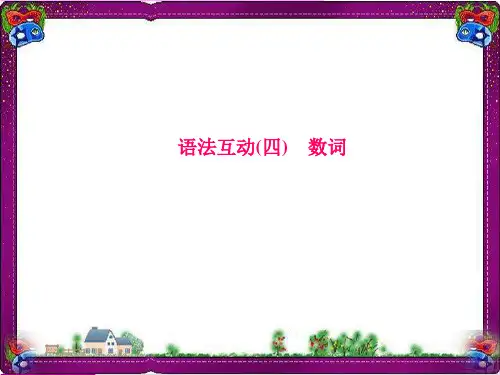

名词一、特别区分不可数:weather, news, information, advice 可数:message, instruction, suggestion,二、可数名词的复数形式1、month2、half thief knife leaf oneself wife life shelf wolf loaf3、hero tomato potato4、foot tooth mouse man woman child5、human being man doctor woman teacher6、sheep deer7、Chinese Swiss Japanese Englishman FrenchmanAmerican Australian Canadian IndianItalian Russian German Greek Swede8、people police shorts trousersplants clothes scissors glasses9、human human三、名词所有格1、词尾已有--s的复数名词,词尾加2、词尾不带--s的复数名词,词尾加3、名词所有格可以表示地点(一般省去某人的家、店铺、办公室等)4、双重所有格:表示整体中的一部分。
of +名词所有格、名词性物主代词代词一、人称代词1、主格:句子中作,2、宾格:句子中作,在或之后。
3、形容词性物主代词:句子中作,在之前。
4、名词性物主代词:相当于一个词。
句子中作或,后不能再接二、反身代词1、enjoy oneself2、teach oneself = learn…b y oneself3、help oneself to…4、leave sb. by oneself5、dress oneself6、lose oneself7、for oneself 8、keep sth. to oneself 9、make oneself P.P三、不定代词each every both neithereither all none四、复合不定代词冠词1、such a/an + adj…. so adj. a/an +…2、quite/rather a/an… a very…3、a/an + adj. + 三餐/天气4、a/an +序数词= another… 。
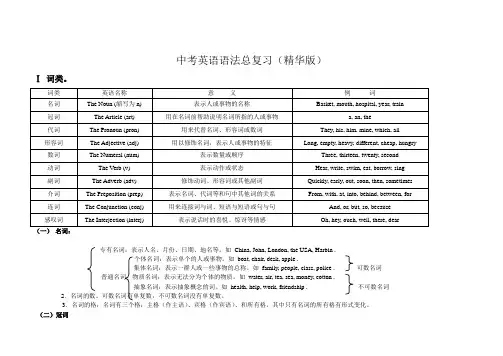
中考英语语法总复习(精华版)Ⅰ词类。
专有名词:表示人名、月份、日期、地名等。
如China, John, London, the USA, Harbin .个体名词:表示单个的人或事物。
如boat, chair, desk, apple .集体名词:表示一群人或一些事物的总称。
如family, people, class, police . 可数名词普通名词物质名词:表示无法分为个体的物质。
如water, air, tea, sea, money, cotton .抽象名词:表示抽象概念的词。
如health, help, work, friendship . 不可数名词 2.名词的数。
可数名词有单复数,不可数名词没有单复数。
3.名词的格:名词有三个格:主格(作主语)、宾格(作宾语)、和所有格。
其中只有名词的所有格有形式变化。
(二)冠词1.定冠词-the .○1特指某(些)人或某(些)事物。
The students are very good.○2说话人与听话人都知道的人或事物。
Where is the toilet ?○3重复提到上文的人或事物。
I have a cat , the cat is white and black .○4表示世界上独一无二的事物。
The moon moves around the earth .○5形容词最高级和序数词前和表示方位的名词前。
I am the oldest . He is the first to school . I live in the south .○6乐器的名称前常用定冠词-the 。
I like playing the piano / violin .○7和某些形容词连用,使形容词名词化,代表某一类人。
We should help the poor .○8放在某些专有名词前。
We will go to visit the Great Wall next week . the people’s Republic of China .○9放在姓氏的复数形式前,表示全家人或夫妇两人。
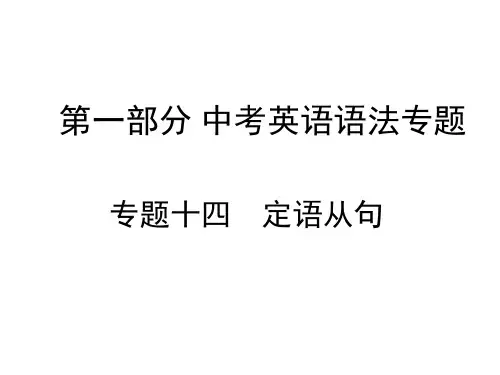
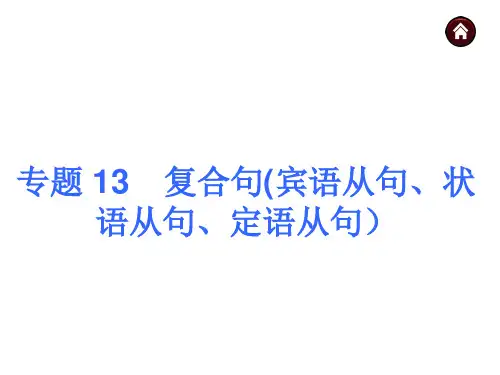

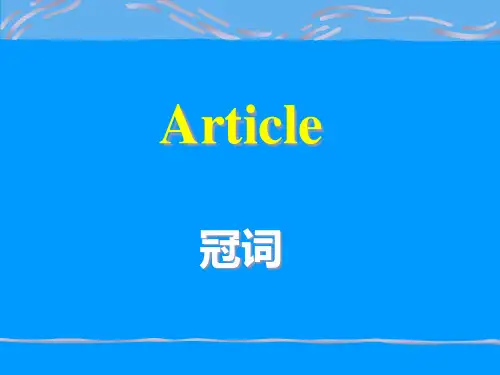

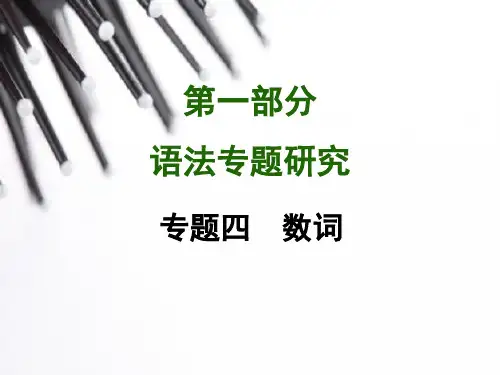


中考英语语法知识难点大全英语语法知识难点(一)(一)形容词和副词I.要点A.形容词1、形容词的用法形容词是用来修饰、描绘名词的,通常在句中作定语、表语或宾补,有时还可作状语。
如:He is honest and hardworking.I found the book interesting.某些形容词与定冠词连用表示一类人作主语时,谓语通常用复数形式。
如:The rich and the poor live in different parts of the city.The English like to be with their families.多个形容词作定语修饰名词的顺序:冠词+序数词+基数词+性质状态(描述性)+形状大小+新旧老少+颜色+国籍+材料+名词。
如:the second five interesting big new red Chinese wall papers.2、形容词比较等级的形式(1)规则形式一般说来,单音节词及少数双音节词在后加-er; --est 来构成比较级和最高级;其他双音节词及多音节词在前加more, most.如:great-greater-greatestbusy-busier-busiestimportant-more important-(the)most important(2)不规则形式good (well)-better-bestbad (ill)-worse-worstmany (much)-more-mostlittle-less-least(3)形容词比较等级的用法①表示两者的比较,用形容词的比较级+than. 如:He is cleverer than the other boys.This one is more beautiful than that one.②表示两者以上的比较,用"the +形容词最高级(+名词)+of(in) …"如:He is the cleverest boy in his class.③表示两者是同等程度,用"as +形容词原级+as". 如:He is as tall as I.I have as many books as you.④越… 越…例如:The more I learn, the happier I am.⑤You can never be too careful. 越小心越好又如:You can never praise the teacher too highly.你怎么赞扬这个老师也不过分。